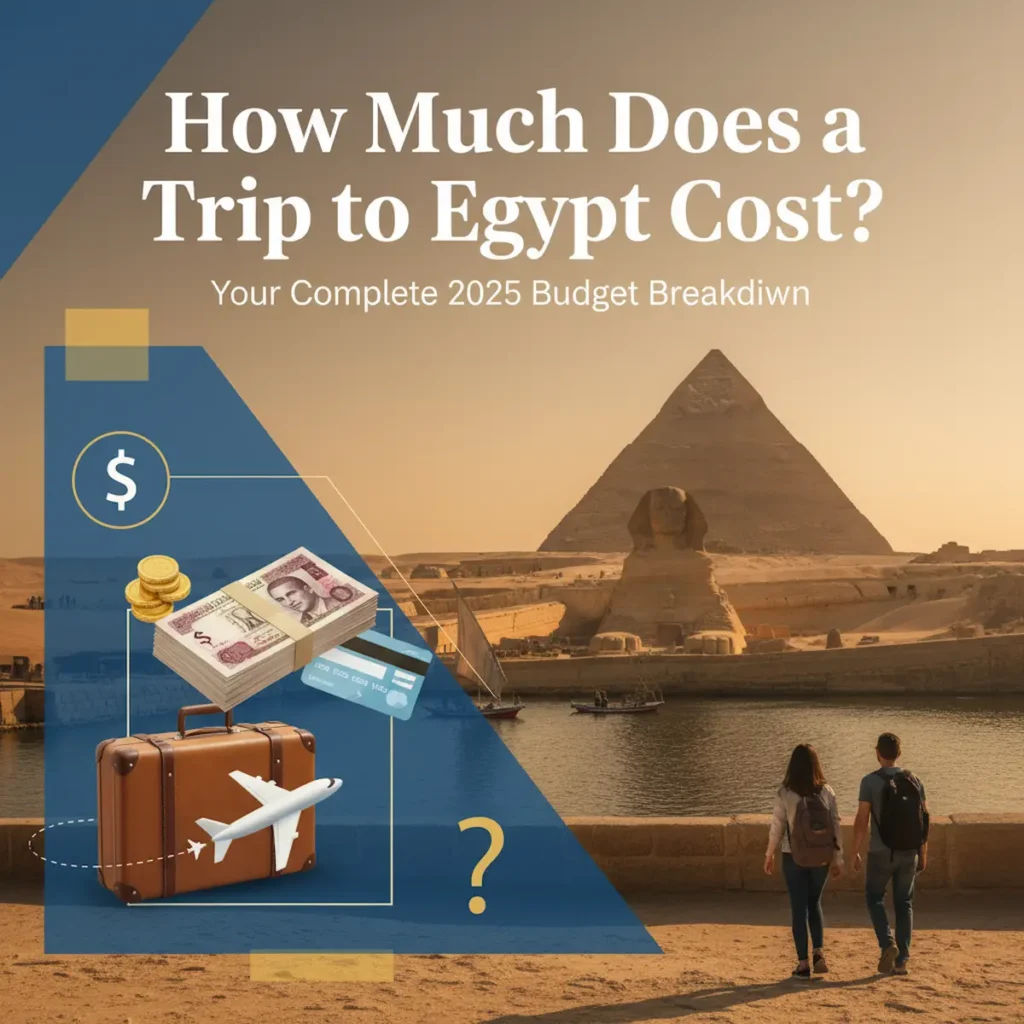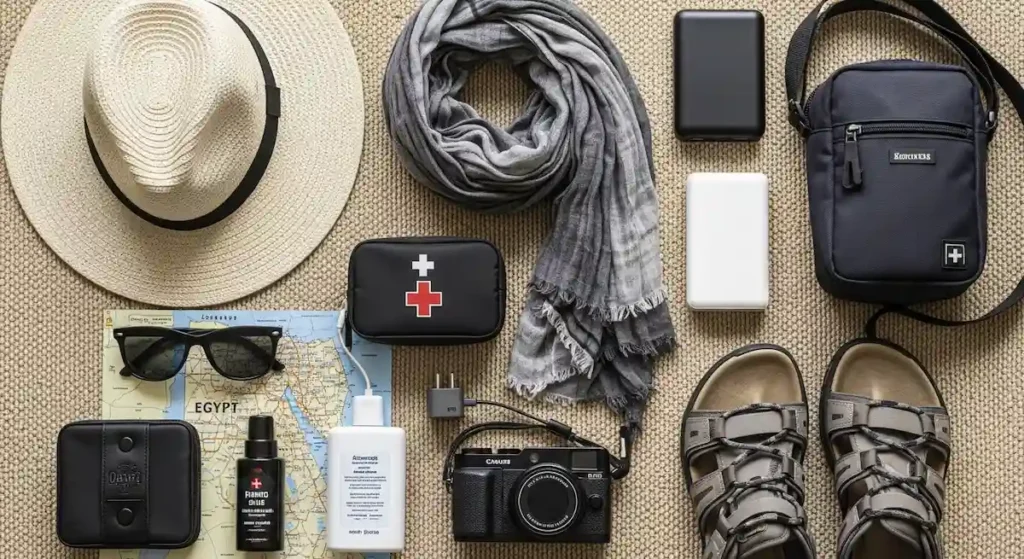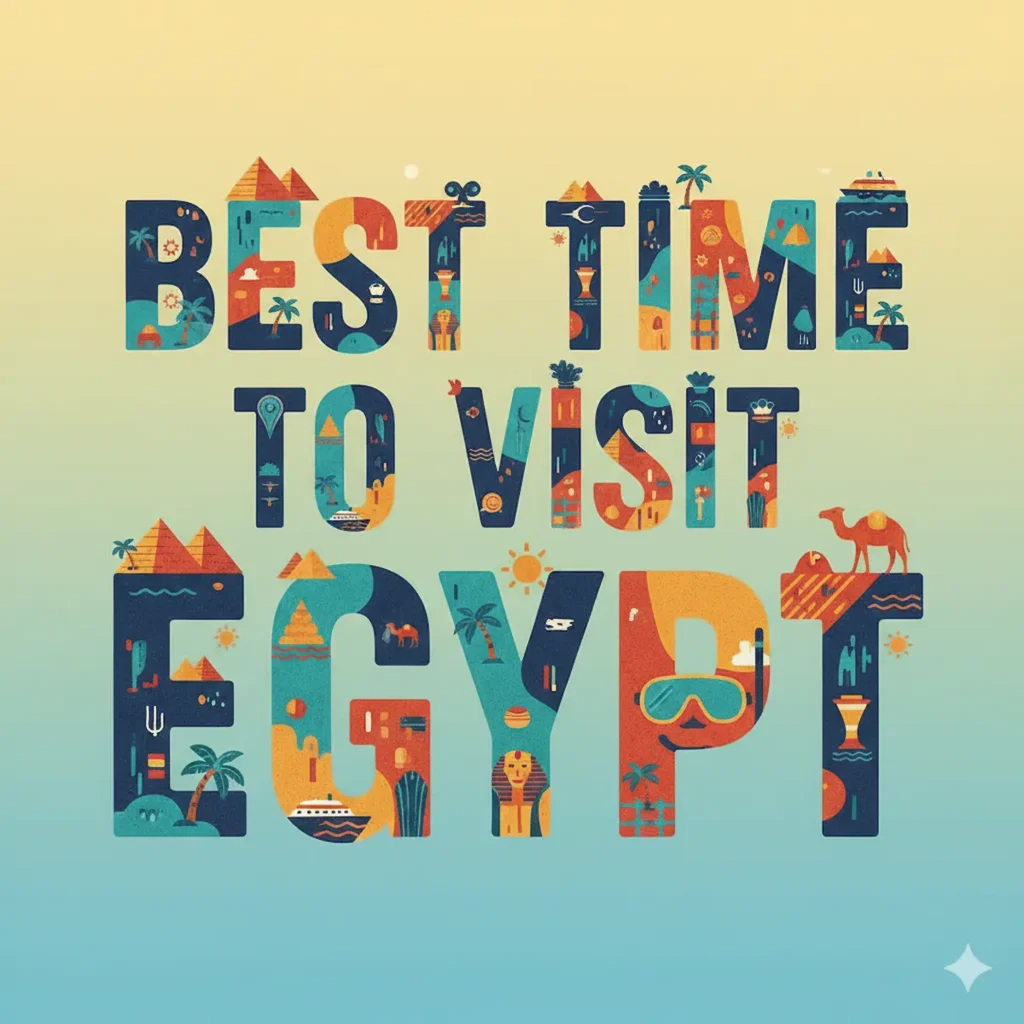Guide to Khan El-Khalili
Guide to Khan El-Khalili (Cairo’s Historic Bazaar)
A trip to Cairo is never considered complete without having visited the famous and age-old Khan El-Khalili Bazaar. One of the most active in the Middle East. This is one of the biggest marketplaces that lies within the boundaries of Islamic Cairo has been a hub of lots of craft, culture, and trade for many centuries. Our Guide to Khan El-Khalili is not just a place to buy things, but a place where you can find the history of Cairo, and Cairo Highlights.
In this Guide to Khan El-Khalili, you will understand its importance. The impressive market was founded in the 14th century, and now it is not just one place, but a network of narrow streets that have tiny shops, unique items, and the smell of warm spices spreading around. For the tourists visiting it, there is more than the typical souvenirs; it is a taste of the everyday life in Cairo, i.e., how their culture works, how the old and the new cope, or even merge.
This culturally rich institution is also a workplace for many people. Over the years, several writers, artists, and explorers have succumbed to its exquisiteness, whereas its indigenous residents can interact in the said outlets in such a manner as to narrate events while sipping on a mint tea. So if you are in the mood for some shopping, like good architecture, or just want to experience the whiff in the air, rest assured that you will go back having been to the heart of Egypt.
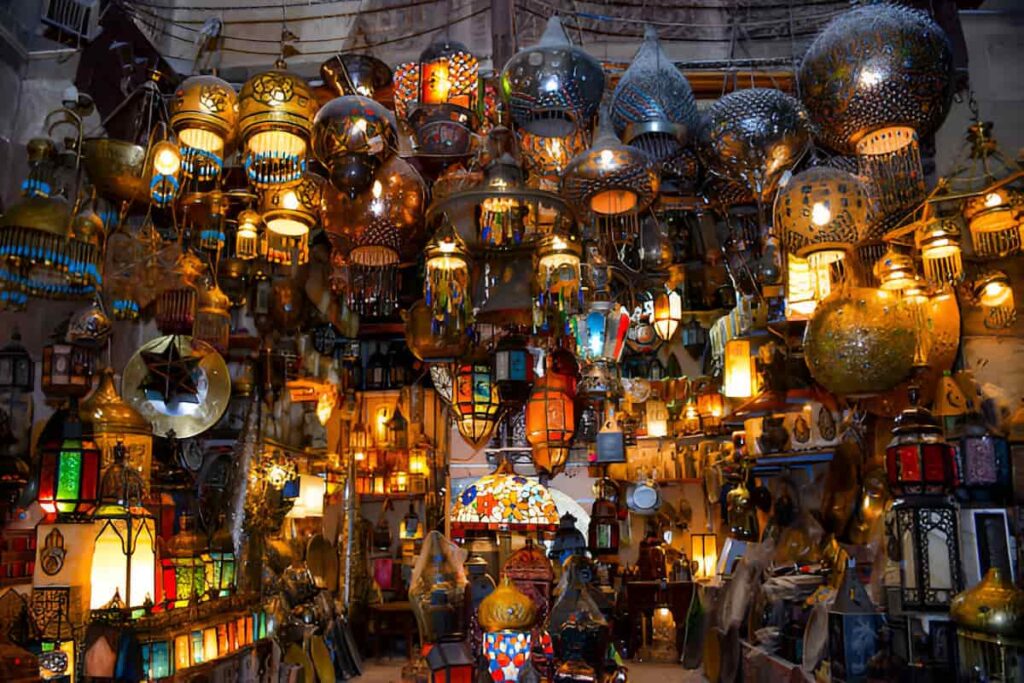
2. History of Khan El-Khalili
Khan El-Khalili’s history dates back more than six centuries, and over this time, it has managed to be in operation throughout the years, as one of the world’s oldest markets. The tale starts in the late fourteenth century, in the time of the Mamluks, when the territory of Khan El-Khalili in Cairo was turned practice in a commercial heart of the city; After founding Sultan Barquq the Gray, his son Sultan Al-Azhar Barquq, and later Sultan Al-Ashraf Barsbey ordered to development of commerce in this area. Originally built as a caravanserai, it did not remain a caravanserai for a long time due to its strategic location in Cairo, and it soon became the most important commercial hall in Egypt, if not in Africa.
In the course of the Ottoman Empire, the market was developed, and it also adopted its contemporary arrangement: there were shafted, turning lanes, covered structures, and traditional inns, such as khans. This made it one of the most popular trading areas in the region, with traders in spices and gold and sellers of luxury and special fabrics bringing in large numbers of customers with the goods. The market was also the site for the development of factories, mosques, and teahouses, which were filled by craftsmen, merchants, as well as by several other people engaged in other activities.
At present, Khan El-Khalili is widely considered a museum that breathes and lives. Preserved are conjectured original Mamluk buildings, and untouched by outside influences is an atmosphere that has been this way for a long ago. As one strolls the convoluted paths, one is transported to a state where one stands in the center and observes via the unfolding backdrop of Cairo and its history.
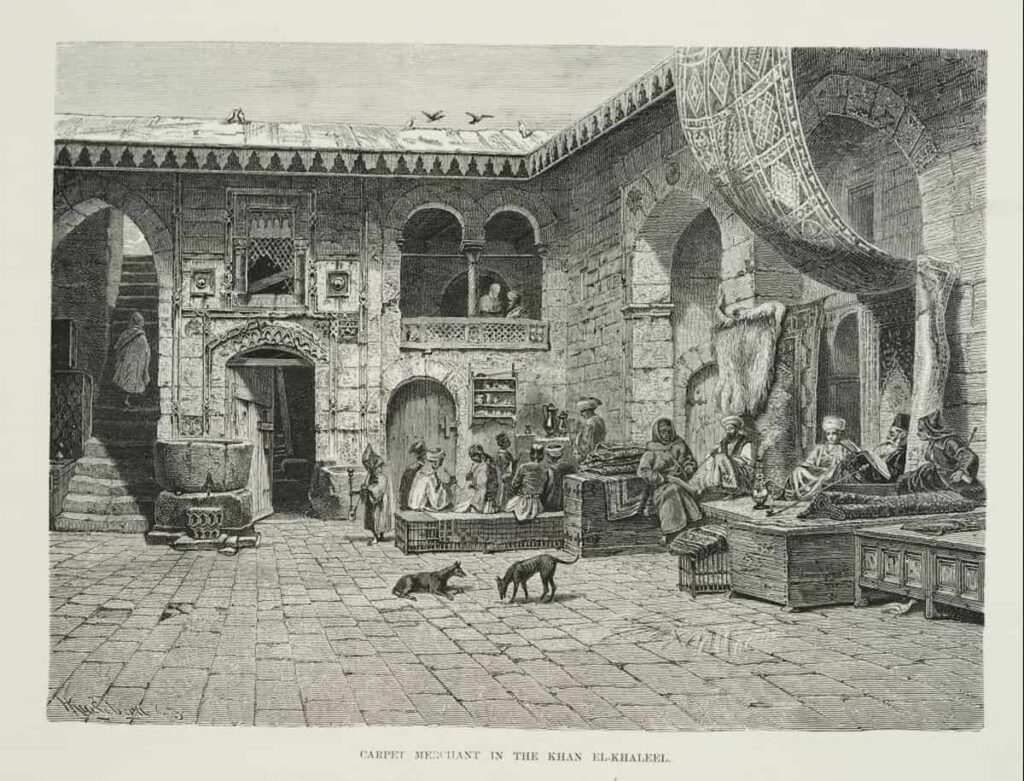
3. What to See and Experience
One of the highlights of the market is the legendary Al-Hussein or Fishawi Cafe. More than two hundred years old, this café has long been a gathering place for writers, poets, and travelers from around the world. Sitting here with a cup of mint tea or strong local coffee, you can feel the heartbeat of Old Cairo and watch the daily life of the bazaar unfold before your eyes.
Around the market, you will also find the famous Al-Hussein Mosque and the historic Al-Azhar Mosque, both of which stand as masterpieces of Islamic art and architecture in Egypt. These mosques are not just religious landmarks but also symbols of the rich cultural heritage of the city.
Walking through the alleys, every turn presents a treasure trove of handcrafted goods. You will encounter lanterns and lights made of hand-forged crystal, intricate jewelry of gold and silver, spices, perfumes, papyrus, antiques, and decorative ornaments. Many of these items are produced in tiny workshops that have remained unchanged for generations. The craftsmen display unique, sometimes quirky, traditional crafts, including mannequins that occasionally startle unsuspecting children, creating a lively, authentic bazaar atmosphere.
Khan El-Khalili is more than just a market; it is a living museum where history, craftsmanship, and daily Egyptian life merge into a sensory experience of colors, scents, and sounds.
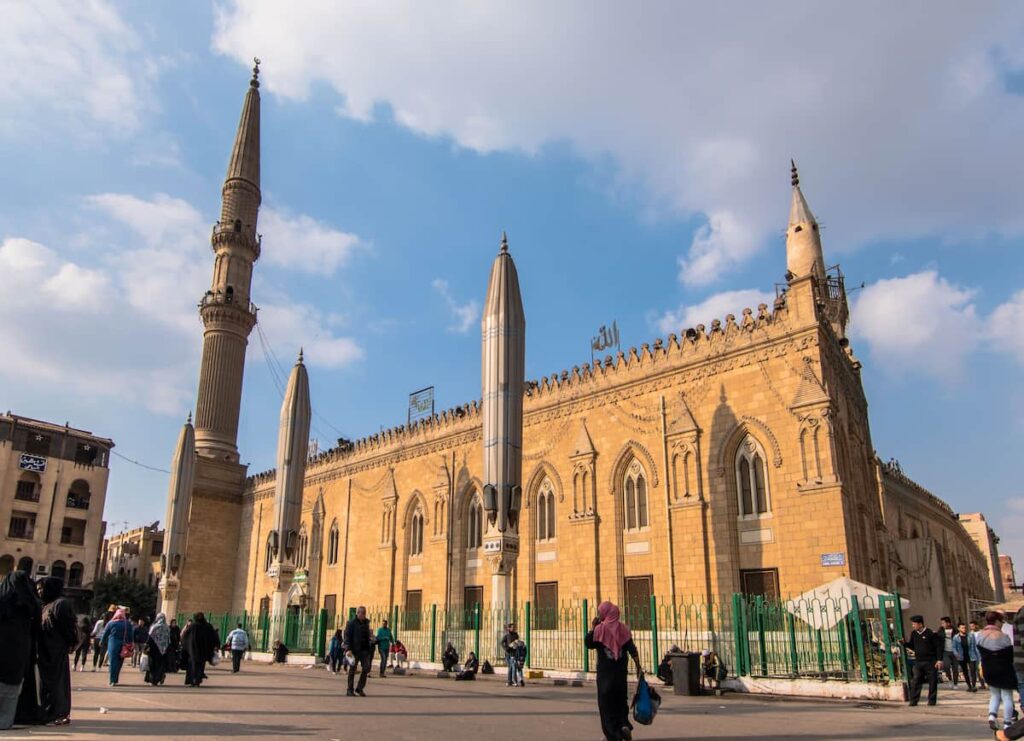
4. Shopping at Khan El-Khalili
It is an amazing experience to go shopping in Khan El-Khalili. In this well-known Cairo area, historical goods and old-fashioned art come to life. It is impossible to walk around the neighbourhood and streets without detecting shops or bazaars in an array of interesting stuff. Traditional local pieces include gold and silver jewelry, souvenir brass types of lamps, colored cloth in pilling stacks, tall pots with decorative ornamental work, different types of aromatic spices, costly from which natural perfumes sleeping, papyrus picture or wall hanging, etc; these can be cherished as a souvenier including the sculptures which can be very outstanding.
You usually don’t purchase things at the stated price, but it is rather an African market in action, where the haggling culture exists, and the lovely sensation of getting a unique deal goes perfectly with it. An essential point is that all people of this country consider haggling as polite and accompanied by a smart bargain. Elementary knowledge of phrases in Arabic, such as “How much?” “Kam el-se’r ?” will add more color to the shopping experience.
Look out for the quality of goods when shopping. Be sure to check for the craftwork of the lamp, which would include hand-carved patterns, make out the papyrus material from the banana leaf one, and the note above the designs, put in jewellery for the guarantee of its genuineness. It is important to remember that many cheaper things are imitations, and buy from reputable shops and recommended artists to ensure the worst does not happen.
If you wish to pick up a more personal gift or if you just want to window shop, visiting Khan El-Khalili is an experience more poignant than a desire to shop.
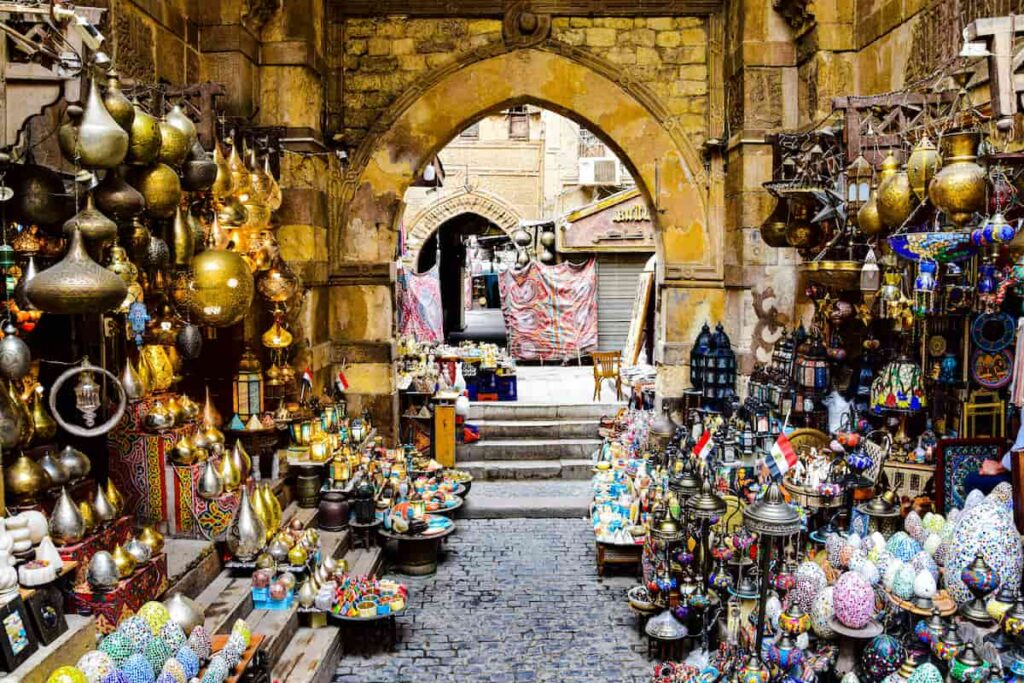
5. Food and Drinks in And Around Khan El-Khalili
Khan El-Khalili is not just a place to walk and shop, it is also a foodie tour across the idyllic flavors of Egypt. The district and pavements surrounding the marketplace are home to several age-old cafes and regular stall vendors that await the perfect rejuvenation of continuous perambulations along brimful alleys.
The leading one on their list is, of course, El Fishawy Café (Al-Fishawi), which has been working day and night uninterruptedly for more than 200 years. El Fishawy Café is a very atmospheric place overlooking oriental goods with their beautiful old mirrors and lamps. Here, both Egyptians and foreigners drink black Egyptian coffee with fragmented mint or eat sweetened mint, while loud market sounds are heard outside.
If you require a meal, there are several small cafés, and the streets are filled with vendors selling some of the signature Egyptian cuisine. Most importantly, do not forget to try koshari; a unique and delicious dish in Egypt made with a great variety of ingredients like beans, pasta, rice, in tomato sauce. In addition, fresh taameya or falafel, shawarma, and arcush mahshi or stuffed vine leaves, as they are also known, are very popular.
There are two available options for meals other than breakfast, kahwa and kabob; one is to try a local type of pizza or pasta, and the other is to have a traditional meal in a trendy restaurant there. As for the third option, who leaves Cairo without eating basbousa, freshly baked baklava with a bit of sweet honey.
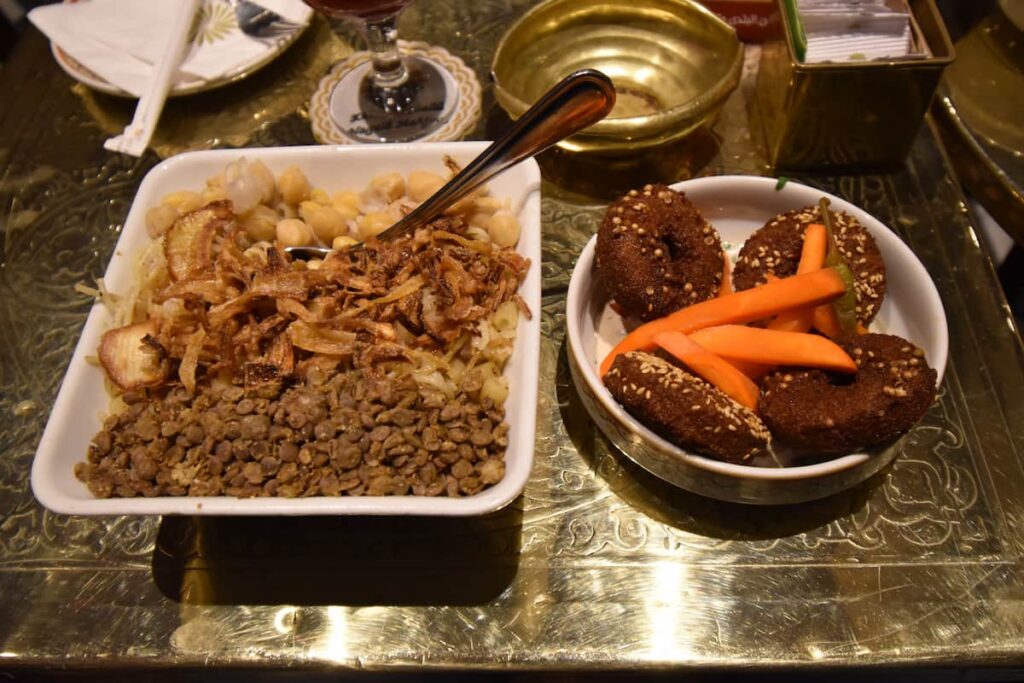
6. Best Time to Visit Khan El-Khalili
Timing can certainly play a big role in your experience in Khan El-Khalili. It is an entirely different market ambience depending on whether you walk through it in the day or at night.
Daylight streets are lively but bear less crowding, allowing better traversing through the stalls, clicking of photos, or even fine interaction with shopkeepers. This is when you want to shop, and you want to admire the details of the ancient architecture without the interference of heavy evening crowds.
At night, the Guide to Khan El-Khalili itself has a different mood. Lanterns and the stars of the shops create a magical glitter over hollow steps and feast vibes. This is the time when locals gather; it feels alive and kicking. Evening would be the right choice if you want to soak in live music, storytelling, and the buzz of Cairo nightlife.
To beat the crowds, a weekday morning would be best, more so if you visit outside of the regular tourist seasons (SPRING and autumn preferred). Should you be around during Ramadan evenings, the area transforms into an extraordinary cultural scene with specific decorations, traditional music, and late-night feasts. Weekend-wise, it would be the busiest, so plan accordingly.
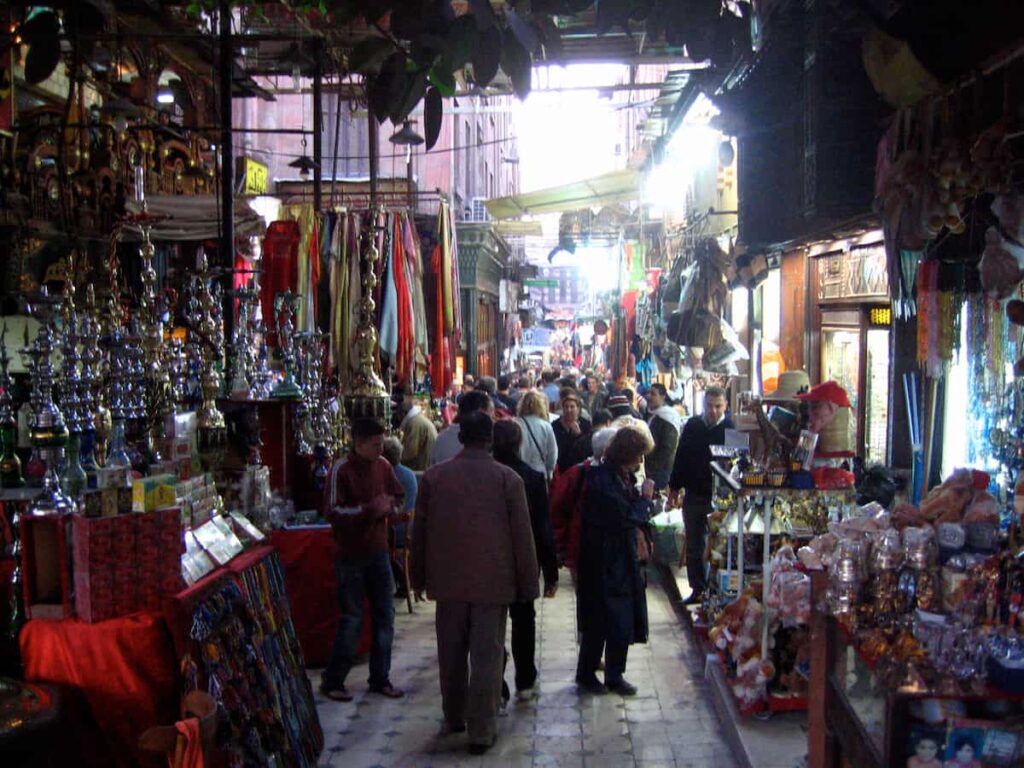
7. Practical Travel Tips for Visiting Khan El-Khalili
Planning ensures a smooth and enjoyable experience at Khan El-Khalili. Situated in the heart of Islamic Cairo, the bazaar is a short trip via taxicab or Uber. It can also be reached using the Cairo Metro, just a few stops away at Al-Azhar or Ataba stations. Many guided tours of Cairo make it a highlight on their package.
Safety and ordeals are of paramount importance. Khan El-Khalili is largely safe during the daytime and evening; however, in any crowded market, one would do well to keep sight of one’s belongings and beware of pickpockets lurking in congested places. The dress code is fairly simple: make sure to dress modestly. The place is historic and conservative. It is all part of the fun to engage in goodwill bargaining, but always remember to do it with a smile.
When discussing photography, the architecture and colors of the stalls make a great composition. Try not to come too close to taking photographs of shopkeepers or locals without their permission. Artists sometimes charge a small fee for photographs of their work.
Aim to set aside between 2–3 hours to wander around the souq; however, if shopping is on your agenda and tea drinking at a café shall be involved in the expedition, along with dropping by other environmental attractions like Al-Hussein Mosque, allocate at least half a day!
8. Nearby Attractions Around Khan El-Khalili
One of the most beautiful things about the Khan El-Khalili is that it is situated in the middle of Islamic Cairo, where several cultural sites can be found. The district is full of old buildings, and it’s a great consolation to enjoy all of such beauty. Having familiarized yourself with the market, you can explore several fields without the need to ask a taxi driver for assistance.
There is the Al-Hussein mosque at the corner, one of the most sacred Islamic worship complexes in Cairo that’s just a stone’s throw away. The mosque was erected in the twelfth century AD and is alleged to enclose holy remains besides an Epic of Worship point for the locals. It seems a quiet and peaceful environment for Ibrahim, especially the calm clutter of the market, coupled with the white colored chairs in a row.
And right next to it is the Al-Azhar Mosque, established in the year 970 AD, a mosque, and the oldest functioning institution for higher education in the Islamic world. Certainly, the visitors to this mosque would not be prohibited from looking at the mosque’s centuries-old rooms and highly present architectural designs, which merge Fatimid, Mamluk, and Ottoman designs.
You might enjoy seeing the area around the Muezz Street, this street is more of an Islamic Architecture construction site than a modern house. It reopened condemning Islamic fashion palaces, which sadly evolved the story in the least two. However, the history of Egyptian treasures awaits discovery after dark.
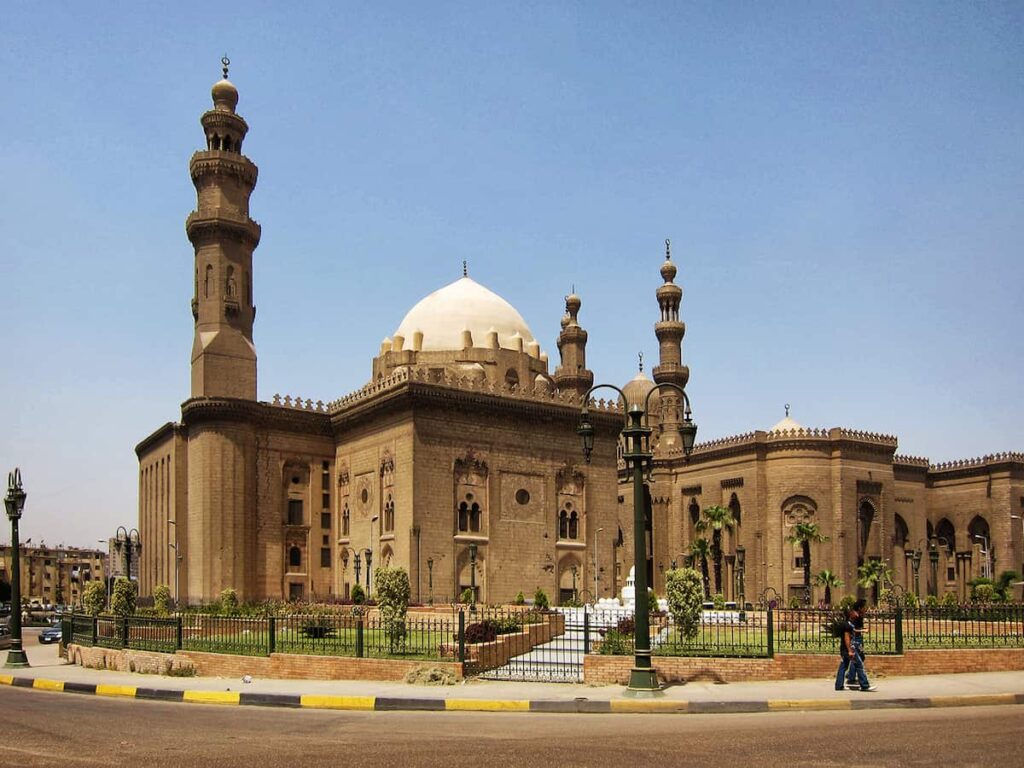
Mosque-Madrassa of Sultan Hassan Exterior
9. FAQs About Guide to Khan El-Khalili
Is Khan El-Khalili safe for tourists?
Yes, Khan El-Khalili is generally safe for tourists and is one of Cairo’s most popular attractions. The bazaar is usually bustling with visitors, shopkeepers, and families. However, as with any crowded place, it’s wise to keep an eye on your belongings and be mindful of pickpockets. Visiting during the day or early evening is recommended.
Can you visit without a guide?
Absolutely. You don’t need a guide to enjoy Khan El-Khalili. Many travelers prefer wandering on their own to experience the bazaar at their own pace. That said, hiring a local guide can enrich your visit, as they can point out hidden gems, help you navigate the maze-like alleys, and assist with bargaining.
Are credit cards accepted?
Most small stalls and traditional shops still operate on a cash-only basis, especially for souvenirs and small purchases. Larger or more established shops may accept credit cards, but it’s always best to carry Egyptian pounds in cash. ATMs can be found nearby if needed.
These frequently asked questions help first-time visitors feel more confident when planning their trip to Khan El-Khalili and ensure a smoother, more enjoyable experience.
10. Conclusion
It is often said that Khan al-Khalili is not just a market, it is the very pulse of Cairo itself. Here, tourists can roam centuries-old lanes and buildings, and somewhere in one of them join interesting workshops, in the other, sip on tea, or have a smoke in the one-sock café. This grand textural network of historical detours and interesting ordinary acts is what strikes one at each look and wander in the great Egyptian settlement of the past 600 years. It’s as if you stepped inside a tale that still has its cobblestone roads, unhurried craftsmen, ancient coffee shops, and spices that have been used for centuries and are still being sold in relatively the same packaging.
Almost all who decide to uncover the uncharted territories of this multilayered city in search of the ‘real’ Cairo will pay a visit to Khan al-Khalili. This market offers a colossal opportunity to learn about the country’s traditions, meet its people, and buy lots of objects that are soaked in the old city’s spirit. Each visit brings something shopping for colorful hand-made trinkets, sitting on local cushions with a cup of black tea, bargaining with a merchant, watching the filming of a commercial within the crowded space… There is something for the local people, for the tourists, and for the residents of the city.
Plan your visit to Khan El-Khalili with this informative travel guide. Appreciate its culture, history, and charm. It will be more interesting for you to be lost and shuffle along its lanes, deal with master craftsmen crossly, and take part of Cairo away with you. One cannot honestly claim to experience Egypt without losing oneself in the never-ending enchantment of Khan El-Khalili.



